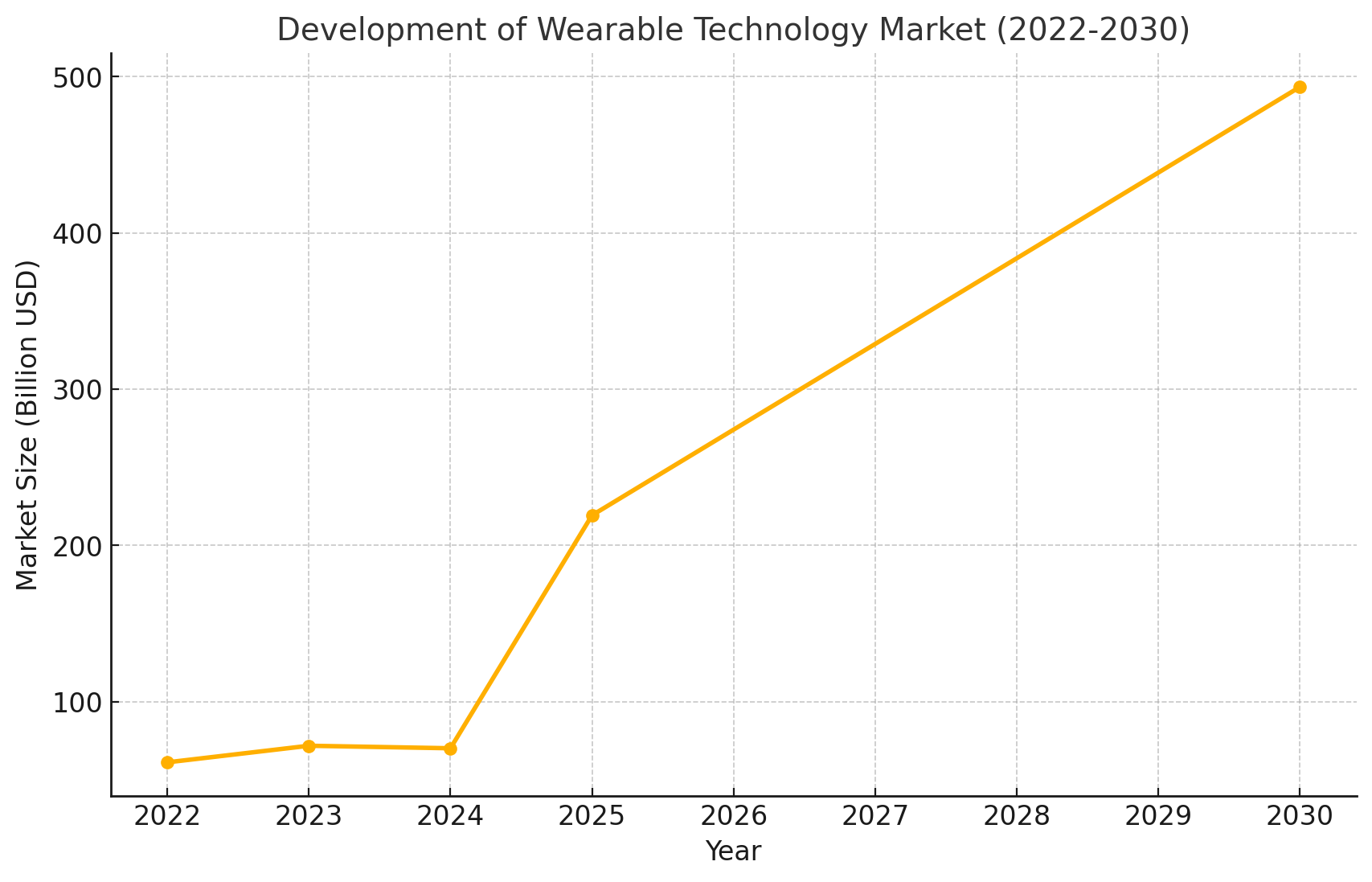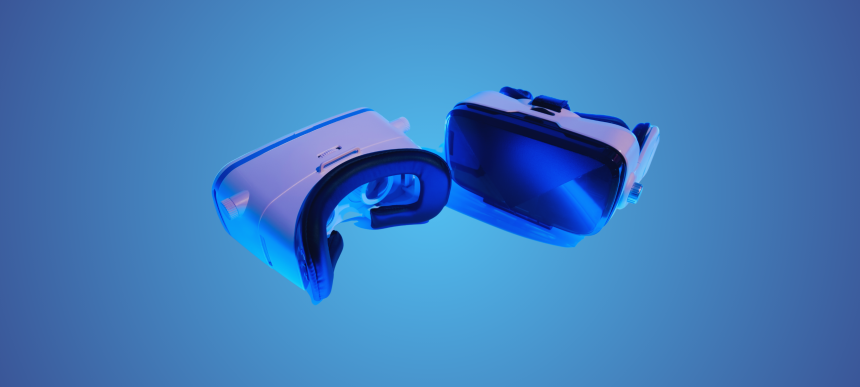Wearable technology has moved beyond being just a trend and is becoming an indispensable part of daily life. Expanding its range of applications from health monitoring to virtual reality, brain-computer interfaces to smart clothing, these devices are continuously evolving. How will they shape the future? Here are the key innovations that will define the future of wearable technology and their impact on society.

The Role of Wearable Technologies in Personal Health Management
How do wearable devices improve personal health monitoring?
In recent years, wearable devices have brought about fundamental changes in how individuals monitor and manage their health data. Today, many people use smartwatches and fitness bands to track their heart rate, sleep patterns, and physical activity levels. However, the functionalities of these devices are now advancing to a whole new level.
For example, smart contact lenses and biosensors applied to the skin can instantly read the body’s biochemical signals, helping to manage serious health conditions such as diabetes, kidney diseases, and cardiovascular disorders. These sensors can detect real-time changes that require medical intervention and send instant alerts to doctors and patients.
In the future, health monitoring will not only be an individual concern but also play a crucial role in shaping public health policies. The vast amount of data collected from wearable devices has the potential to improve epidemiological studies and enhance public health strategies. Moreover, integrating these devices with insurance companies and healthcare providers could pave the way for personalized health solutions.

Wearable Sensors and Smart Fabrics: The Intersection of Technology and Fashion
How do smart textiles and wearable sensors transform everyday clothing?
The integration of technology into fashion is making wearable devices not only functional but also aesthetically appealing. Smart fabrics equipped with advanced sensors go beyond merely being clothing; they can detect body movements, muscle activity, and environmental factors.
For instance, smart tights and shirts designed for athletes analyze muscle fatigue during workouts and provide real-time feedback to minimize the risk of injury. Similarly, posture-correcting smart garments offer ergonomic support for individuals who have to sit for long hours.
In the fashion industry, innovations such as color-changing fabrics based on body temperature and touch-sensitive clothing are gaining attention. These smart textile products are not only reshaping dressing habits but also transforming the way people interact with technology.
Wearable Technologies and the Digital World: Metaverse, AR, and VR
How do augmented reality (AR) and virtual reality (VR) gain a new dimension with wearable devices?
The concept of the Metaverse is blurring the boundaries between the physical and digital worlds, fundamentally altering how we interact. AR and VR-based wearable devices are among the key tools driving this transformation. Companies like Meta, Apple, and Microsoft are developing smart glasses that make access to the digital world more seamless and intuitive.
For example, AR glasses used in the workplace help employees quickly learn complex machinery and receive remote technical support. In the education sector, virtual reality headsets allow students to experience lessons interactively, making learning more effective.
These technologies are not limited to work and education; they are also bringing significant changes to the tourism, entertainment, and retail sectors. For instance, a customer could use AR-enabled smart glasses to explore products virtually before entering a store or experience historical artifacts in 3D holograms during museum visits.

Brain-Computer Interfaces: Controlling Wearable Devices with the Mind
How do brain-computer interfaces (BCI) change human-machine interaction?
One of the most groundbreaking innovations in the future of wearable technology is the development of brain-computer interfaces (BCI). This technology enables users to control devices solely with their thoughts, offering immense opportunities, especially for individuals with disabilities.
For example, paralyzed individuals can use BCI-based systems to control computers and prosthetic limbs directly through brain signals. Additionally, the use of BCI-supported devices is becoming increasingly common in the gaming and entertainment industries. The ability to play games or navigate virtual reality worlds using only thoughts hints at the revolutionary impact of this technology.
In the future, BCI technology is expected to become more compact and portable, integrating into various aspects of daily life. This could enable users to make phone calls, control smart home systems, or participate in virtual meetings simply by using their thoughts.

Battery Life and Energy Efficiency: How Will Future Wearable Devices Last Longer?
How can wearable devices extend their battery life?
One of the biggest technical challenges faced by wearable technologies is limited battery life. Today, many users need to charge their smartwatches or VR headsets frequently. However, new energy management technologies offer promising solutions to overcome this issue.
For instance, kinetic energy harvesters are being developed to generate power from movement, enabling smart shoes to charge themselves as the user walks. Wearable devices that harness solar energy to self-charge are particularly advantageous for outdoor sports enthusiasts. Additionally, innovations such as flexible batteries and supercapacitors enhance the longevity of devices, improving user convenience.
What are the development rates of Wearable Technology over the years?
According to https://www.grandviewresearch.com/ site data, the development rates of wearable technology by years are as follows:

Here is a graphical representation of the development of the wearable technology market from 2022 to 2030, showing its rapid growth in market size.
Personal Data Security: How Secure Are Wearable Devices?
How do wearable technologies affect user privacy?
The vast amount of personal data collected by wearable devices raises significant security concerns. User health information, location data, and biometric identities contain sensitive details that must be protected against cyber threats.
To address this issue, encryption technologies, blockchain-based authentication systems, and biometric security measures are becoming more prevalent. Furthermore, transparent data management policies that allow users to control what data is shared and with whom are essential for strengthening personal privacy.
A Life Transformed by Wearable Technologies
Wearable technologies continue to revolutionize fields such as healthcare, fashion, virtual reality, and brain-computer interfaces. While these innovations enhance user experience, they also introduce new technical and ethical challenges, such as data security and energy management. In the future, wearable technologies are expected to become more sustainable, secure, and user-friendly, further integrating into our daily lives.










